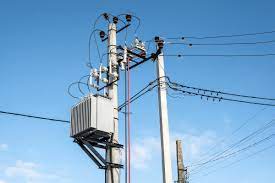Understanding the distinct characteristics and applications of pad mounted transformers and pole mounted transformers is crucial in the fields of electrical engineering and power distribution. Both types play pivotal roles in power systems, but they differ significantly in design, installation, and usage.
Pad Mounted Transformer
Definition and Usage
Pad mounted transformers are ground-mounted electric power distribution transformers, usually enclosed in locked metal cabinets. These transformers are prevalent in residential subdivisions, commercial areas, and industrial settings. They're accessible from the front and sides, facilitating easy maintenance and repairs.
Design Characteristics
Pad mounted transformers typically have a low-profile design, allowing them to blend into the surrounding environment easily. Their tamper-resistant construction enhances safety, especially in areas with high pedestrian traffic. The transformers come in various capacities, ranging from small units serving a few homes to larger units that power entire commercial complexes.
Installation and Maintenance
The installation of pad mounted transformers requires a concrete base or pad, and they demand more space than pole mounted transformers. The ground-level access eases the process of maintenance and inspection. These transformers are generally more robust and less prone to weather-related damages or vandalism due to their secure enclosures.
Performance and Specifications
When it comes to performance:
- Efficiency: Pad mounted transformers are often more efficient in power distribution, particularly for medium to high power requirements.
- Cost: These transformers can be more costly initially compared to pole mounted ones, reflecting their larger size and capacity.
- Specifications: They come in various specifications, accommodating a wide range of voltages and power levels. They often support higher voltage applications than pole mounted transformers.
Pole Mounted Transformer
Definition and Usage
Pole mounted transformers are elevated on utility poles, typically used to step down the primary voltage used in overhead power lines to a lower secondary voltage for residential and light commercial use. They are a common sight in rural and suburban areas.
Design Characteristics
These transformers are mounted high above the ground, usually on wooden, steel, or concrete poles. They are designed to withstand environmental elements like rain, snow, and extreme temperatures. Pole mounted transformers are smaller in size compared to pad mounted transformers, making them suitable for areas with limited space.
Installation and Maintenance
Pole mounted transformers require less ground space and can be more challenging to maintain due to their height. Their installation and repair often necessitate specialized equipment and trained personnel.
Performance and Specifications
Key aspects of performance include:
- Efficiency: These transformers are generally less efficient than pad mounted transformers for large scale applications.
- Cost: The initial costs are usually lower, but maintenance can be more challenging and, potentially, more costly.
- Specifications: Pole mounted transformers are available in various sizes and capacities, typically lower than pad mounted transformers. Their lifespan can be influenced by exposure to environmental conditions.

Comparison and Conclusion
Power Handling and Efficiency
Pad mounted transformers are more efficient for handling higher power levels. They are well-suited for dense residential or commercial areas where large power distribution is necessary.
Installation and Maintenance
Pole mounted transformers offer easier installation in space-constrained environments but require more effort in maintenance due to their elevated position.
Cost and Life Expectancy
While pad mounted transformers might have a higher initial cost and require more space, their ground-level access simplifies maintenance, potentially extending their lifespan compared to their pole mounted counterparts.
In summary, the choice between pad mounted and pole mounted transformers depends largely on the specific requirements of the power distribution system, including power capacity, available space, budget, and maintenance considerations.